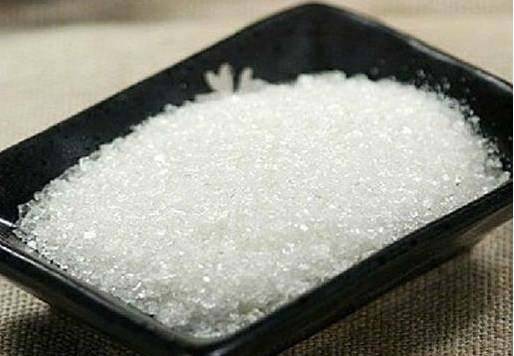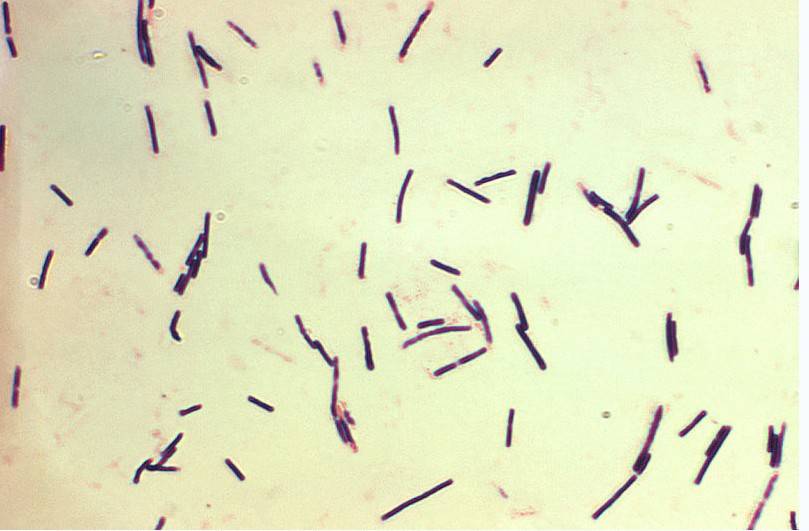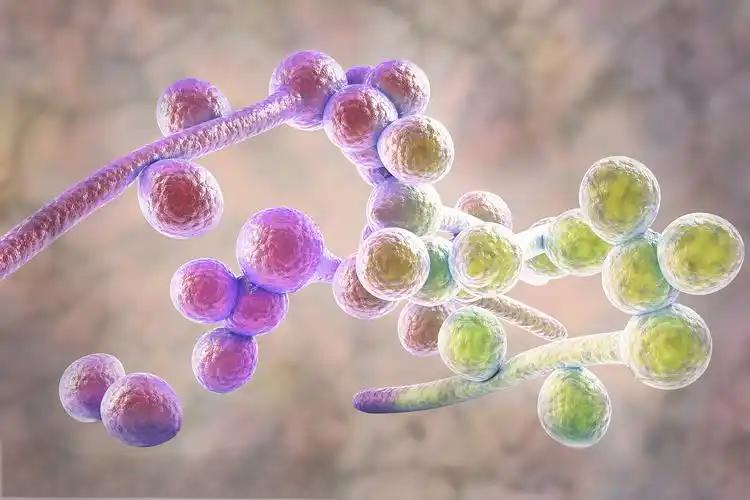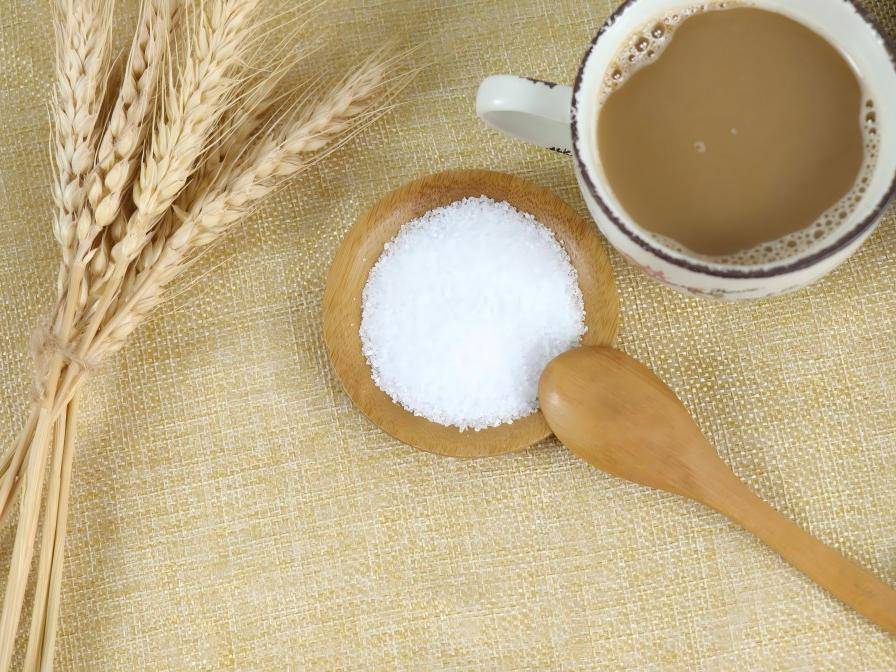What Is the Benefit of Sweetener Allulose Powder?
With the improvement of living standards, consumers are paying more and more attention to the amount of sugar they consume in their daily diet. In recent years, sugar-free or low-sugar drinks have also become popular among consumers. The National Nutrition Plan (2017-2030) also clearly proposes the promotion of a healthy lifestyle, and “reducing sugar” is one of the key special initiatives. Rare sugars are a type of monosaccharide and its derivatives that exist in nature but in very small amounts (as defined by the International Society for Rare Sugars in 2002). They have the advantages of being highly stable, low in calories, non-hygroscopic, non-cariogenic and highly tolerated.
Allulose (D-allulose or D-psicose) belongs to the category of rare sugars. It is naturally found in foods such as wheat, raisins, figs, and brown sugar[1], as shown in Table 1. It was first discovered in wheat in the 1930s and isolated from the antibiotic allopurinol adenosine, hence its name allulose.

1. The physical and chemical characteristics of D-allulose
The systematic name for D-allulose is D-ribose-2-hexulose, and it is a diastereoisomer of D-fructose at the C3 position. The chemical structure is shown in Figure 1. In August 2011, the US Food and Drug Administration (FDA) determined that D-allulose could be used as a generally recognized as safe food and as a component of food or food additives. In December 2020, the US Food issued guidelines on allulose, which is not included in the total carbohydrates and artificial sweeteners[2].
D Allulose is a white powdery crystal that is highly soluble in water. Its molecular formula is C6H12O6, molecular weight is 180.156, corrected density is 1.589g/cm3, melting point is 109℃, and surface tension is 92.6dyne/cm. The solubility curve (Figure 3) shows that solubility increases with increasing temperature, but is significantly lower than the solubility of D-fructose at the same temperature [2]. Allulose has similar mouthfeel and bulk properties to sucrose, and its sweetness is only 70% of that of white sugar. Its caloric value is 0.4 kcal/g, which is only 1/10 of the caloric value of sucrose. Because there are five tautomers in an aqueous allulose solution, the proportion of tautomers in the solution changes continuously as allulose dissolves, causing the optical rotation of the solution to change dynamically. Eventually, a dynamic equilibrium is reached among the five tautomers, and the optical rotation of the solution reaches a stable value. The higher the temperature when allulose dissolves, the faster the optical rotation will reach equilibrium[3].
2 Functional properties of allulose
A rat intake experiment using the radioactive isotope 14C-labeled D-allulose showed that about 97% of allose was excreted with the urine 6 hours after injection, and that more than 95% of allose was excreted within 7 hours after oral intake, of which more than 70% of D-allose was excreted directly in the urine in molecular form , and the remaining allulose is excreted in the form of metabolites, indicating that only a small amount of allulose remains in the body [4]. Recent clinical trials have also shown that D-allulose intake for 12 weeks in healthy people does not cause any physical symptoms [5].
2.1 Allulose has a protective effect on nerves
Shigeru et al. showed that D-allulose can protect the testis from 2-ethylhexylphthalate by inhibiting the production of reactive oxygen species in the testis, thereby inhibiting testicular atrophy [7]. Takata et al. showed in vitro that a 50 mM D-allulose solution significantly slowed the apoptosis of PC12 cells induced by 200 μM 6 6-Hydroxydopamine-induced apoptosis in PC12 cells. In addition, D-allulose can also increase the concentration of reduced glutathione in cells, thereby treating neurodegenerative diseases[8]. Monocyte chemoattractant protein 1 (MCP-1) is a 76-amino acid chemokine produced in response to glucose stimulation. It is considered to be a major marker of atherosclerosis. D-allulose can partially inhibit the activity of p38 mitogen-activated protein kinase and suppress the expression of monocyte chemoattractant protein 1, thereby reducing the occurrence of atherosclerosis to a certain extent and providing help for the treatment of atherosclerosis [9].
2.2 Allulose has a hypoglycemic effect
According to data from the 24th National Academic Conference of the Chinese Medical Association's Diabetes Branch, China has the largest number of diabetic patients in the world, with about 129.8 million adult diabetic patients [11]. In recent years, the incidence of diabetes in China has gradually increased, with type 2 diabetes accounting for up to 90% of cases. The main pathological feature is a decrease in glucose metabolism regulated by insulin (insulin resistance) [10]. This is accompanied by a defect in the function of pancreatic β cells, resulting in a decrease or relative decrease in insulin secretion. The main symptoms in patients are “three highs and one low”, i.e. polyuria, polydipsia, polyphagia and unexplained weight loss [9]. D -Alloxan has been shown to significantly lower blood sugar and improve glucose tolerance{12~14}. On the one hand, this may be because glucose, fructose and allulose all belong to the hexose family and enter the bloodstream via the same transmembrane transporters (GLUT5, GLUT2), so allulose significantly inhibits the absorption of glucose and fructose in the small intestinal epithelial cells and reduces the permeability of the two monosaccharides [6].
Experimental studies have shown that glucokinase in the liver manages glucose intake and production, and a decrease in its activity is the pathogenesis of hyperglycemia [15, 16]. Alloketose can promote fructokinase in the liver to phosphorylate fructose, activate glucokinase in the liver, transfer glucokinase from the nucleus to the cytoplasm, accelerate the synthesis of liver glycogen, and reduce the blood glucose concentration in the plasma [1 7, 22]. On the other hand, glycosidase inhibitors can competitively inhibit α-glycosidase on the brush border of the small intestine mucosa, thereby reducing the breakdown and absorption of starch and sucrose in the small intestine. Therefore, the use of highly effective α-glucosidase inhibitors to intervene in glucose tolerance defects has become an important method for the treatment of type 2 diabetes [18]. Alloglucan can inhibit the activity of α-glucosidase, inhibit the breakdown of carbohydrates such as sucrose and maltose in the small intestine, and reduce the glucose concentration in the small intestine [19]. Therefore, alloglucan can be used to assist in the treatment of type 2 diabetes.

2.3 Alloglucan has a hypolipidemic effect
In addition to its hypoglycemic effect, alloxan has been found to affect the metabolic process of body fat. Huang Weilai et al. studied the effect of alloketose on the process of fat metabolism in Wistar rats and found that the rats in the alloketose group had the lowest body weight and significantly lower serum triglyceride, free fatty acid, and low-density lipoprotein cholesterol levels (P<0.05). Analysis revealed that this was mainly due to alloketose significantly upregulating the mRNA expression level of the PPAR-α gene in the liver (P<0.0 5), while significantly downregulating the mRNA expression level of the FAS gene, thereby inhibiting the expression of cholesterol and the synthesis of fat in the liver [20]. At the same time, allulose also increases the concentration of succinate dehydrogenase (SDH) in the serum and liver and hepatic lipase (HL) in the liver, accelerating the body's fat metabolism [22].
Hossain et al. found that D-allulose can significantly inhibit weight gain and abdominal fat accumulation in mice. Immunohistochemical analysis showed that D-allulose induced the translocation of glucose kinase from the nucleus to the cytoplasm of liver cells, increased the activity of glucose kinase, and synthesized glycogen in the liver. At the same time, the experimental results show that D-allulose can significantly slow down the fibrosis of pancreatic β cells, reduce the damage of high blood sugar to the islets of Langerhans, protect the normal function of pancreatic β cells, and enable the pancreas to produce insulin to control blood sugar levels [22]. D-Allulose can reduce the body's food intake, lower the body's serum insulin and leptin levels, inhibit the activity of lipogenic enzymes in the liver, and increase the level of fat transcriptional regulation, thereby increasing the body's fat oxidation metabolism rate, reducing the body's fat accumulation, and reducing the body's weight [23~25].
2.4 Allulose has antioxidant activity
Superoxide dismutase (SOD) is an important free radical scavenger widely found in the body. It is a protective agent that comes with the antioxidant system of biological systems and can remove superoxide anion free radicals in the body. Catalase (CAT) is a key enzyme in the metabolism of reactive oxygen species in the body, and it has the ability to synergistically remove free radicals in the body with superoxide dismutase (SOD). The levels of superoxide dismutase and catalase are often used as indicators of antioxidant capacity. Existing research results show that the superoxide dismutase content in rats in the allulose group is significantly higher than that in rats in other groups [21]. Allulose and its derivative allose also exhibit some free radical scavenging activity, and the scavenging capacity is highly correlated with concentration [26].
3. Research progress in the production process of allulose
Because allulose has many excellent characteristics such as multiple functional properties and a low energy value, the allulose content in natural foods cannot meet human needs. Therefore, scholars at home and abroad have conducted in-depth research on the production and development of allulose. Compared with Japan, South Korea, the United States and other countries, although China's research on allulose started relatively late, the industry has also made considerable progress and achieved quite good research results. In recent years, the number of allulose-related patents has been on the rise[27, 28].
At present, the preparation methods for D-allulose mainly include chemical synthesis and bioconversion. Among them, chemical synthesis has not yet been industrialized due to issues such as chemical reagents, complex processes, environmental pollution, and yield [29, 30].
Compared with chemical synthesis, biotransformation has the advantages of mild reaction conditions, high conversion efficiency, and avoiding the use of toxic and harmful chemical reagents. Therefore, biotransformation has become the focus of research and development of D-allulose. In 2002, Professor Kagawa of Japan innovatively proposed a rare sugar conversion strategy, the Izumori strategy [31]. After nearly 20 years of improvement and expansion, the Izumori strategy has been greatly improvements and additions. It can use hexulose-3-epimerase, aldose isomerase, and polyol dehydrogenase to achieve the interconversion of 34 hexoses [32].
At present, only 11 allo-hexose-3-epimerases have been reported in the literature, and the properties of D-allose-3-epimerases from different sources are different, as shown in Table 3. Natural aldopentose isomerase all have the natural defects of poor thermal stability, short half-life, and the need to improve catalytic efficiency. This is also the key direction of many researchers. Zhu et al. performed homology modeling on Staphylococcus aureus (SaDAE) and reconstructed the Sa-DAE_V105A mutant, which increased the relative activity of D-fructose by 68%, and the conversion rate after 6 hours increased to 38.9% [44]. relative activity increased by 68%, and the conversion rate increased to 38.9% after 6 hours [44].

Wang Yifan obtained the mutant H56Q/A 107P, which has improved thermal stability and relative activity, through irrational directed evolution of DPE from Clostridium cellulolyticum H10. Incubation at 55 °C for 6 h increased the residual enzyme activity threefold. It is speculated that the mutation at position 107 on the loop ring is proline , which enhanced the rigidity of the overall enzyme structure and improved thermal stability [45]. In order to improve the activity and reusability of the enzyme, many researchers have used enzyme immobilization technology to immobilize the allulose-3-epimerase, thereby increasing the number of times the enzyme can be used and the recovery rate.
Li Qiuxi studied the differences between the production of D-allulose using sodium alginate immobilized E. coli cells and D-allulose-3-epimerase immobilized on different carriers. After immobilization, the optimum enzyme activity temperature of DPE cells was increased, and after 7 to 10 reuse cycles, the enzyme activity recovery rate was still high [46]. Bu Yifan's experiments showed that the optimum temperature for the enzymatic activity of immobilized cells was increased by 15°C, and the enzymatic activity of immobilized cells was as high as 259.20 U/g carrier [47]. Wei Yuxia found that adding an appropriate amount of titanium dioxide to the traditional immobilized material sodium alginate can significantly improve the recovery rate of the immobilized cell's enzyme activity and mechanical strength. When the sodium alginate concentration is 2%, the cell embedding amount is 60g/L, the titanium dioxide addition amount is 1:4 (TiO2: SA), the calcium chloride concentration is 2%, and the glutaraldehyde concentration is 0.03%, the recovery rate of the enzyme activity of the immobilized cells is 82%, and after 10 consecutive batches, the enzyme activity recovery rate is still 58%, and the mechanical strength is 100% [48].
At present, the main raw material for the bioconversion of D-allulose is fructose. Fructose and D-allulose are isomers, and separating the two and obtaining a concentrated solution of D-allulose is also a key technology. Commonly used separation techniques include ion exchange chromatography and simulated moving bed chromatography. Some researchers have reported that D-fructose and D-allulose can be separated and purified using DTF-Ca2+ ion exchange resin. The column temperature was 60°C, the injection volume was 10 mL, and the flow rate was 1 mL/min.
The purity of the obtained D-allulose was 98.3% [49]. However, simulated moving bed chromatography has the advantages of automated continuous separation, high resin utilization, and low resource consumption, so it has great potential for application in the production of D-allulose. Because the D-allulose molecule has two adjacent axial-flat hydroxyl groups arranged in parallel, which best conforms to the cation binding model, D-allulose has the strongest cation binding ability. This principle can be used to separate the two. Studies have found that DOWEX310Ca resin is the most suitable stationary phase. The flow rate is 5mL/min to 10mL/min. The mass transfer coefficients of D-fructose and D allulose have a mass transfer coefficient of 4.84/min and 24.2/min, respectively. The porosity of the column is 0.092, which lays the foundation for optimizing the separation of D-allulose using simulated moving bed chromatography [50].

Due to the high solubility of D-allulose in aqueous solution, it is difficult to crystallize pure product, so the process of obtaining pure product is also a key technology that restricts the development of the industry. The melting temperature of D-allulose is 109°C, and it is also prone to glass transition when heated. It is not easy to obtain solid powder by conventional spray drying [51]. Guo Yuanheng et al. used ethanol as the crystallization system and studied the process conditions such as the ratio of ethanol to D-allulose, the crystallization time and the crystallization temperature. The results showed that the density of the D-allulose solution was 1.35 g/mL, the ratio of ethanol to D-allulose solution was 3.8:1, the crystallization temperature was 25°C, and the crystallization time was 325 min. The yield of D-allulose can reach 71.58% [52]. Because with the increase of supervision on production safety, the above-mentioned ethanol precipitation process uses a large amount of ethanol, an explosive solvent, so this method places higher requirements on the explosion-proof performance of the production plant.
4 Future and prospects
In the past two years, consumers have become increasingly health-conscious, and low-sugar, low-calorie products have become increasingly popular. Erythritol has been strongly sought after by food manufacturers, and there is even a phenomenon of a severe shortage of erythritol products in 2021. However, there is an individual tolerance issue with erythritol[53], which has led to severe restrictions on the amount of erythritol added to foods. D-allulose, which is also a sugar substitute, does not have such a situation. In practical applications, D-allulose has high solubility and a relatively low solution viscosity. However, when D-allulose is used as a raw material to make drinks, it is found that it is more prone to a Maillard reaction with proteins than erythritol. Therefore, special attention is required when making drinks containing proteins. With in-depth research on the safety evaluation, physiological functions, and industrialization of D-allulose, as well as the healthy and rapid development of the industry, D-allulose has great potential and prospects for development.
Reference:
[ 1] OSHIMA H,KIMURA I,IZUMORI K.Psicose contents in various food products and its origin[J].Food Sci.Technol Res,2006,12(2): 137-143.
[2] FOOD,DRUGS,DEVICE. FDA finalizes psicose guidance and re- quests information on other sugars metabolized differently than tra- ditional sugars[S]. USA:FDA. 2020.
[3] FUKADA K,ISHII T,TANAKA K,et al. Crystal structure,solu- bility and mutarotation of the rare monosaccharide D-psicose[J]. Bu- lletin of Chemical Society of Japan,2010,83( 10):1193-1197.
[4] WHISTLER L R,SINGH P P,LAKE C W.D-psicose metabolism in the rat[J].Carbohydrate research,1974,34:200-202.
[5] HAYASHI N,IIDA T,YAMADA T,et al.Study on the postprandial blood glucose suppression effect of D-psicose in borderline diabetes and the safety of long-term ingestion by normal human subjects[J]. Biosci Biotechnol Biochem. 2010,74(3):510-519.
[6] HOSSAIN A,YAMAGUCHI F,MATSUO T,et al.Rare sugar D-psi- cose:Potential role and therapeutic monitoring in maintaining obesi- ty and type 2 diabetes mellitus[J].Pharmacology and Therapeutics, 2015,Nov( 155):49-59.
[7] SUNA S,YAMAGUCHI F,KIMURA S,et al.Preventive effect of D- psicose ,one of rare ketohexoses,on di-(2- ethylhexyl)phthalate (DEHP)-induced testicular injury in rat[J].Toxicology Letters.2007, 173:107-117.
[8] TAKATA M K,YAMAGUCHI F,NAKANOSE K,et al.Neuroprotective effect of D-psicose on 6-hydroxydopamine-induced apopto- sis in rat pheochromocytoma( PC12)cells[J].Journal of Bioscience and Bioengineering,2005,100(5):511-516.
[9] MURAO K,YU X,CAO W M,et al.D-Psicose inhibits the expres- sion of MCP-1 induced by high-glucose stimulation in HUVECs[J]. Life Science,2007,81(7):592-599.
[ 10] CNOP M,WELSH N,JONAS J C,et al.Mechanisms of pancreatic beta-cell death in type 1 and type 2 diabetes:Many differences, few similarities[J],Diabetes,2005,54(2):97-107.
[ 11] LI Yongze,TENG Di,SHI Xiaoguang,et al.Prevalence of diabetes recorded in mainland China using 2018 diagnostic criteria from the American Diabetes Association:national cross sectional study [J].BMJ 2020,369(997):1-11.
[ 12] BAEK S H,PARK S J,LEE H G.D-psicose,a sweet monosaccha- ride,ameliorate hyperglycemia,and dyslipidemia in C57BL/6J db/ db mice[J].Journal of food Science,2010,75(2):H49-53.
[ 13] IIDA T,KISHIMOTO Y,YOSHIKAWA Y,et al.Acute D-psicose administration decreases the glycemic responses to an oral malto- dextrin tolerance test in normal adults[J].Journal of Nutritional and Science Vitaminol,2008,54(6):511-514.
[ 14] HAYASHI N,IIDA T,YAMADA T,et al.Study on the postprandi- al blood glucose suppression effect of D-psicose in borderline dia- betes and the safety of long-term ingestion by normal human sub- jects[J].Bioscience , Biotechnology,and Biochemistry , 2010,74(3):510-519.
[ 15] TOYODA Y,ITO Y,ANIGAWA K,et al.Impairment of glucoki- nase translocation in cultured hepatocytes from OLETF and GK rats ,animal models of type 2 diabetes[J].Archives of Histology Cytology,2000,63(3):243-248.
[ 16] TAKEUCHI H,INOUE Y,ISHIHARA H,et al.Overexpression of either liver type or pancreatic beta cell type glucokinase via recombinant adenovirus enhances glucose oxidation in isolated rat hepatocytes[J].FEBS Letters,1996,393:60-64.
[ 17] MATSUO T,IZUMORI K.Effects of Dietary D-Psicose on diurnal variation in plasma glucose and insulin concentrations of rats[J]. Bioscience,Biotechnology and Biochemistry,2006,70(9):2081- 2085.
[18] Chi Liqun, Shu Xiangrong, Wang Ting. Experimental study on the inhibition of glucose hydrolase and improvement of glucose tolerance by sevoflurane [J]. Chinese Journal of Preventive Medicine, 2018, 11(19): 856-860.
[19] [ 19] MATSUO T,IZUMORI K.Dietary D-psicose,a C-3 epimer of D- fructose ,suppresses the activity of hepatic lipogenic enzymes in rats[J].Journal of Clinical Biochemistry and Nutrition,2009,45(2): 202-206.
[20] Huang Weilai, Jiang Bo, Zhang Tao. Research on the effect of D-allulose on the metabolism of paper in Wistar rats [J]. Journal of Food and Biotechnology, 2018, 37(4): 344-349.
[21] Huang Weilai. Effect of D-allulose on blood glucose regulation and lipid metabolism in rats [D]. Wuxi: Jiangnan University, 2016.
[22] HOSSAIN A M,KITAGAKI S,NAKANO D,et al.Rare sugar D- psicose improves insulin sensitivity and glucose tolerance in type 2 diabetes Otsuka Long-Evans Tokushima Fatty(OLETF )rats[J]. Biochemical and Biophysical Research Communications.2011,405( 1):7-12.
[23] NAGATA Y,KANASAKI A,TAMARU S.D-Psicose,an Epimer of D-Fructose,Favorably Alters Lipid Metabolism in Sprague − Daw- ley Rats[J].Journal of Agricultural and Food Chemistry,2015,63( 12):3168-3176.
[24] OCHIAI M,ONISHI K,YAMADA T,et al.D-Psicose increases en- ergy expenditure and decreases body fat accumulation in rats fed a high-sucrose diet[J].International of Food Sciences and Nutrition, 2014,65(2):245-250.
[25] MATSUO T,BABA Y,HASHIGUCHI M,et al.Dietary D-psicose, a C-3 epimer of D-fructose,suppresses the activity of hepatic lipo- genic enzymes in rats[J].Asia Pacific Journal of Clinic Nutrition, 2001,10(3):233-237.
[26] MURATA A,SEKIYA K,WATANABE Y,et al.A novel inhibitory effect of D-allose on production of reactive oxygen species from neutrophils[J].Journal of Bioscience and Bioengineering,2003,96( 1):89-91.
[27] Guo Yuanheng, Wang Jing, Wang Xiaoyan, et al. Research and industrialization progress of biosynthesis of D-allulose in China [J]. Modern Food. 2020 (6): 34-40.
[28] Chen Xue. A review of patented technologies for D-allulose [J]. Science, Technology Innovation and Application, 2020 (22): 20-22.
[29] Zhu J. Research on the synthesis of allulose and derivatives [D]. Dalian: Dalian University of Technology, 2015.
[30] Liu M L, Yuan W T, Li N, et al. Research progress of the functional sweetener D-allulose [J]. China Food Additives, 2022 (1): 21-25.
[31] IZUMORI K.Bioproduction strategies for rare hexose sugars[J]. Naturwissenschafen,2002(89):120-124.
[32] GRANSTROM B T,TAKATA G,TOKUDA M,et al.Izumoring: Anovel and complete strategy for bioproduction of rare sugars[J].J Biosci Bioeng,2004,97(2):89-94.
[33] IZUMORI K,KHAN A R,OKAYA H,et al.A new enzyme,D-keto- hexose 3-epimerase,from Pseudomonas sp.ST24[J].Bioscience Bio- technology and Biochemistry,1993,57(6):1037-1039.
[34] KIM H J,HYUN E K,KIM Y S,et al.Characterization of an Agro- bacterium tumefaciens D-psicose 3-epimerase that converts D-fruc- tose to D- psicose[J].Applied and Environmental Microbiology, 2006,72(2):981-985.
[35] ZHANG Longtao,MU Wanmeng,JIANG Bo,et al.Characteriza- tion of D-tagatose-3-epimerase from Rhodobacter sphaeroides that converts D-fructose into D-psicose[J].Biotechnol Lett,2009 31(6): 857-62.
[36] JIA Min,MU Wanmeng,CHU Feifei,et al.A D-psicose 3-epimer- ase with neutral pH optimum from Clostridium bolteae for D-psi- cose production:Cloning,expression,purification,and characteriza- tion[J].Applied Microbiology and Biotechnology,2014(98):717- 725.
[37] MU Wanmeng,CHU Feifei,XING Qingchao,et al.Cloning ,ex- pression,and characterization of a d-Psicose 3-Epimerase from Cl- ostridium cellulolyticum H10[J].J.Agric.Food Chem.2011,59( 14): 7785-7792.
[38] ZHANG Wenli,FANG Dan,XING Qingchao,et al.Characteriza- tion of a novel metal-Dependent D-Psicose 3-Epimerase from clos- tridium scindens 35704[J].Plos One,2013,8(4):e62987.
[39] ZHANG Wenli,FANG Dan,ZHANG Tao,et al.Characterization of a Metal-Dependent D-Psicose 3-Epimerase from a Novel Strain,De- smospora sp 8437[J].Journal of Agricultural and Food Chemistry, 2013,61(47):11468-11476.
[40] ZHU Yuemin,MEN Yan,BAI Wei,et al.Overexpression of D-psi- cose 3-epimerase from Ruminococcus sp.in Escherichia coli and its potential application in D-psicose production[J].Biotechnology Let- ters,2012,34:1901-1906.
[41] MU Wanmeng,ZHANG Wenli,FANG Dan,et al.Characterization of a D-psicose-producing enzyme,D-psicose 3-epimerase,from Cl- ostridium sp[J].Biotechnology Letters,2013,35:1481-1486.
[42] ZHANG Wenli,LI Hao,ZHANG Tao,et al. Characterization of a d-psicose 3-epimerase from Dorea sp. CAG317 with an acidic pH optimum and a high specific activity[J].Journal of Molecular Catal- ysis B:Enzymatic,2015,120:68-74.
[43] ZHANG Wenli,ZHANG Tao,JIANG Bo,et al.Biochemical charac- terization of a D-psicose 3-epimerase from Treponema primitia ZAS-1 and its application on enzymatic production of D-psicose[J].Jour- nal of the Science of Food and Agriculture,2016,96( 1):49-56.
[44] ZHU Zhangliang,GAO Dengke,LI Chao,et al. Redesign of a nov- el D-psicose 3-epimerase from Staphylococcus aureus for thermostability and efficient biocatalytic production of D-psicose[J].Microbial Cell Factories,2019 18( 1):59.
[45] Wang Yifan. Molecular modification, expression optimization and stability research of Clostridium cellulolyticum H10 D-allulose 3-epimerase [D]. Wuxi: Jiangnan University, 2021.
[46] Li Qiuxi. Research on immobilization technology of D-allulose 3-epimerase [D]. Wuxi: Jiangnan University, 2014.
[47] Bu Yifan. Production optimization of D-allulose 3-epimerase [D]. Wuxi: Jiangnan University, 2021.
[48] Wei Yuxia. Heterologous expression and immobilization of D-allulose 3-epimerase in Bacillus subtilis [D]. Wuxi: Jiangnan University, 2021.
[49] Xing Qingchao, Mu Wanmeng, Jiang Bo, et al. Separation and purification of D-allulose [J]. Food Industry Science and Technology, 2011, 9(66): 236-242.
[50] Zhou Jinyi, Wu Guoqing, Guo Yuanheng, Chen Bo, et al. Determination of chromatographic model parameters and mass transfer coefficients for the separation of D-fructose and D-allulose by simulated moving bed chromatography [J]. Modern Food, 2020, 19(36): 119-125.
[51] Deng Shufen, Li Kewen, Luan Qingmin, et al. A method for preparing D-allulose by vacuum spray drying: China, 201710615290.4[P]. 2017-07-26.
[52] Guo Yuanheng, Lü Zhe, Ding Ziyuan, et al. Optimization of the crystallization process of D-allulose in an ethanol system [J]. Food Industry Science and Technology, 2019, 40 (24): 185-198.
[53] STOREY D, LEE A,BORNET F,et al. Gastrointestinal tolerance of erythritol and xylitol ingested in a liquid[J]. European Journal of Clinical Nutrition(2007)61,349-354.


 English
English French
French Spanish
Spanish Russian
Russian Korean
Korean Japanese
Japanese





